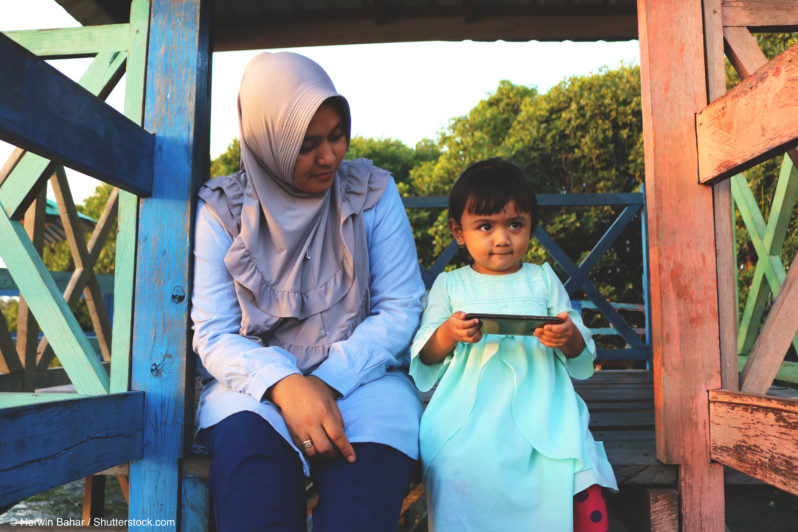Just a few weeks ago, the world’s leaders gathered for the first United Nations High Level Meeting on Universal Health Coverage (UHC), issuing a forceful call to place the Sustainable Development Goals’ ambition of “health and well-being for all, at all ages” at the center of the global agenda. This multilateral push comes as individual low- and middle-income countries (LMICs) are already making strong progress on launching insurance schemes. Ghana’s National Health Insurance Authority is renewing members at the rate of more than 4,000 per week. In India, the Ayushman Bharat scheme has issued more than 100 million “e-cards” and empaneled 18,000-plus hospitals. And Indonesia’s Jaminan Kesehatan Nasional has enrolled more than 220 million beneficiaries, representing 83% of the population. The hard-won progress of these and other visionary programs is putting the dream of UHC within reach.
These successes at creating and enrolling beneficiaries in health insurance programs allow policymakers and practitioners to begin to explore answers for next-order questions: How do we ensure that programs are financially sustainable over the long term? How do we best align incentives across providers, patients, and communities? And how can we drive better health outcomes for families and for populations? In short, what does “UHC 2.0” look like, and how do we get there?
1. Changing the game on non-communicable diseases
Today, more than 1.2 billion people have risk factors for non-communicable diseases (NCDs) like diabetes, cardiovascular disease, and cancers, creating a “double burden” that threatens to cost $500 billion a year (4% of GDP) in LMICs and bankrupt national health insurance programs. To put it simply: UHC will not be sustainable without changing the trajectory on NCDs.
UHC 2.0 approaches tackle NCDs head on, using new platforms and methodologies to reduce prevalence for people at risk and to deliver effective secondary prevention for those who are already suffering from chronic diseases and mental illness. This can include embracing novel technologies like the mobile phone networks that today connect five billion people across the globe and the smartphones that are in the pockets of more than three billion people. It also involves building new “shared value” collaborations that integrate solutions among non-traditional stakeholders like retailers, technology companies, and urban planners.
Take secondary prevention of cardiovascular disease. Mobile-based cardiac rehabilitation (“CR”) programs involve the majority of patient-provider contact taking place through the mobile phone, often with the addition of social behavior change communication content delivered via SMS, voice messages and mobile apps. These interventions have been demonstrated to be “as effective as traditional centre-based CR with significant improvement in quality of life,” helping to improve management of a particularly at-risk population of patients.
2. Embracing new models for delivery and coordination of care
Finding ways of improving quality and value for money in health systems will be critical to ensure that scarce resources are used with maximum impact. For example, unnecessary caesarian sections are estimated to cost health systems $2.32 billion each year, far more than the cost of clinically-necessary caesarian sections. Reducing unnecessary procedures and prescriptions and improving the quality of care that is required will be critical for sustaining UHC and improving population health.
UHC 2.0 approaches deliver services and tools that help families navigate health systems in ways that drive efficient service utilization while also delivering great user experiences. This strategy recognizes the critical role that primary care providers play, not as bureaucratic “gatekeepers” but as accessible and engaging guides to better health. It applauds investments in traditional primary care facilities and human resources while also challenging health systems to explore new technology-enabled innovations.
Over the course of five years working in Bangladesh, we demonstrated the potential of new digitally-enabled models to increase access to health services and improve health system efficiency. The “Tonic Doctor” service delivered over 350,000 primary care consultations over the phone, driving economies of scale and reducing transportation costs. Through a “Navigator” digital database, patients in need of referrals were able to get help finding the right specialist (public or private), reducing unnecessary consultations and wasteful spend.
3. Building partnerships for resource mobilization
Based on the current pace of progress, LMICs will face a $176 billion health financing gap in 2030. As our world enters its Fourth Industrial Revolution, the rising informalization of workforces in many LMICs – accelerated by the proliferation of tech-enabled “gig economy” jobs – is reducing the effectiveness of traditional mechanisms for collecting insurance premiums. At the same time, national health insurance programs are striving to improve their own efficiency and lower administration costs. Many private sector organizations are working to address similar challenges, and “crowding in” their expertise can help to accelerate progress.
UHC 2.0 approaches bring private sector resources and capabilities into health systems in ways that go beyond traditional, but nevertheless important, methods like taxation. This can include “blended financing” models that combine private sector and public sector resources to serve new populations. It can also involve public-private partnerships where companies can use their capabilities to advance national health insurance priorities – for example, using consumer marketing and distribution tactics to collect health insurance premiums.
Just a few months ago, Grand Challenges Canada and the Government of Cameroon launched the world’s first “development impact bond” aimed at saving newborn babies. The Cameroon Kangaroo Mother Care Development Impact Bond connects “investors” who provide upfront funding to deploy interventions with “outcomes funders” who pay back the investors only if the results are achieved. How might we leverage similar financing mechanisms to provide “risk capital” to promising models for expanding financial projection for health?
Conclusion: Taking UHC 2.0 to scale
We have ten years to achieve UHC, and the resources to make UHC 2.0 a reality. It will be enough only if we accelerate progress. The time for pilots is over, and the time for making big bets, for taking risks, and for driving scale is here. It is time to act.

